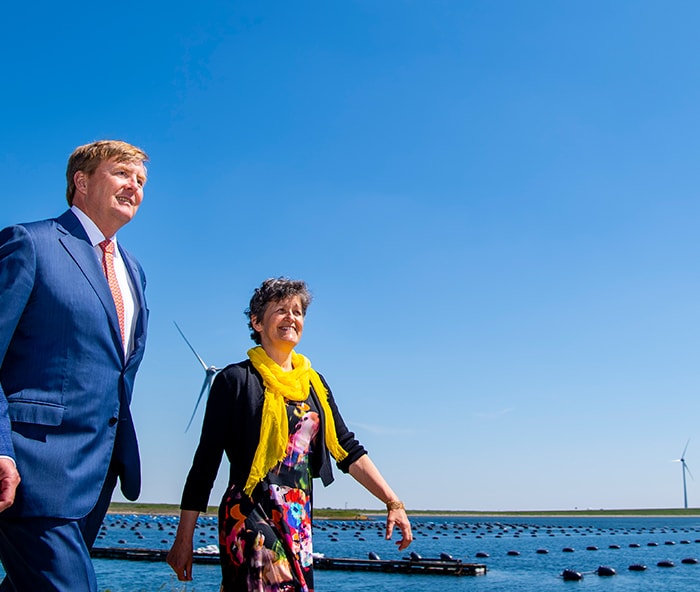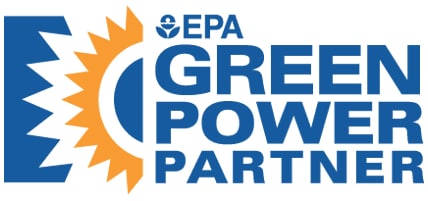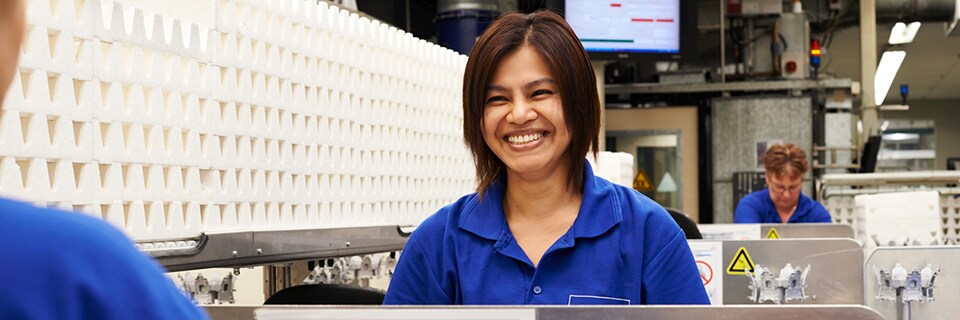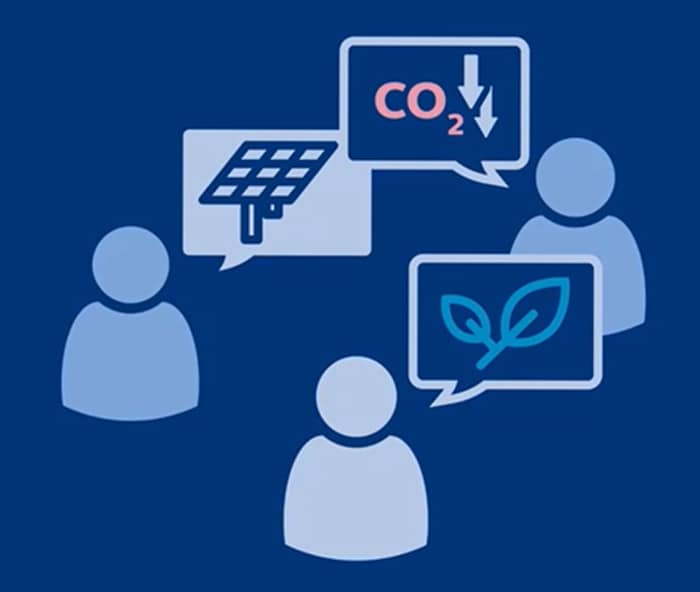Driving climate action in our own operations and beyond
At Philips, we see climate change as a serious threat. One that is expected to cause some 250,000 additional deaths per year globally. Therefore, we are taking action to rethink our business models and decouple economic growth from the impact we have on the environment and society.
At Philips, we see climate change as a serious threat. One that is expected to cause some 250,000 additional deaths per year globally. Therefore, we are taking action to rethink our business models and decouple economic growth from the impact we have on the environment and society.
In 2020 we achieved our goal of becoming 100% carbon-neutral in our operations and sourcing all our electricity from 100% renewable sources.
We are committed to sourcing over 75% of our total energy consumption from renewable sources by 2025, and to reducing CO2 emissions in our entire value chain in line with a 1.5 °C global warming scenario (based on Science Based Targets). We aim to achieve net-zero greenhouse gas emissions across the value chain by 2045.
We are committed to sourcing over 75% of our total energy consumption from renewable sources by 2025, and to reducing CO2 emissions in our entire value chain in line with a 1.5 °C global warming scenario (based on Science Based Targets). We aim to achieve net-zero greenhouse gas emissions across the value chain by 2045.
What does it take to drive climate action and realize sustainable healthcare?


Towards 75% renewable energy by 2025
As of 2020, all Philips’ sites are 100%-powered by renewable electricity sources. Most of that comes from projects we helped create, such as the Los Mirasoles windpark in the US and the Krammer and Bouwdokken windfarms in the Netherlands. In Europe, Philips is securing renewable electricity supply through consortium-led power purchase agreements. To reach 100% renewable electricity usage globally, we purchase renewable electricity within the markets or via local utility companies. In 2024, we sourced 80% of our total energy consumption from renewable sources, exceeding our target of 75% by 2024, while gradually phasing out fossil fuels from our entire operations. In North America, we have been partnering with the United States Environmental Protection Agency since 2016, as part of their Green Power Partnership to stimulate the transition to green energy.


Compensating emissions while improving health in underserved communities
Although reduction is key to carbon neutrality, unavoidable carbon emissions require compensation. This is achieved by the cancellation of acquired carbon credits. Carbon offsets are independently verified through established methodologies to ensure quality reductions and are transparently listed. In 2024, we offset emissions equivalent to the annual uptake of approximately 14.2 million medium-sized oak trees. This covers our operational carbon footprint, which includes all CO2-e emissions from our sites, business travel, and transportation and distribution. We offset our emissions by financing carbon-reduction projects in emerging regions that have a strong link with health and well-being (UN Sustainable Development Goal 3) and sustainable consumption (UN Sustainable Development Goal 12). These projects drive social, economic and additional environmental benefits for the communities in which they are rolled out.
Providing access to safe drinking water while reducing wood consumption This carbon-emission reduction project will provide millions of liters of safe drinking water in Uganda and reduce the mortality risk from water-borne diseases. Additionally, less wood will be required for boiling water, leading to less indoor air pollution and slowing down the deforestation rate. As such, this contributes to the protection of a biogenic sink. To ensure quality, all offsets are verified under the Gold Standard. Planting trees is expected to improve livelihoods and address issues such as deforestation, biodiversity loss, and adaptation to climate change, as well as providing support and education on, among others, HIV and malaria. This project therefore enhances a biogenic sink. To ensure quality, all offsets are verified under the VCS standard. Deforestation is expected to be reduced through promotion of sustainable businesses to protect the forest. Unsustainable harvest of fuelwood is reduced, thereby contributing to the protection of a biogenic sink. The forest supports the supply of water to other parts of Ethiopia and neighboring countries. It is also the habitat of diverse and, in some cases, rare species. To ensure quality, all offsets are verified under the VCS standard. In India, the energy supply gap is reduced by providing access to clean energy and related employment through wind generation. This is therefore considered a technological solution that also enables an improvement in livelihoods. To ensure quality, all offsets are verified under the VCS standard. By supporting a range of cookstove technologies across Ghana and Kenya, the projects improve respiratory health, reduce fuel costs and reduce deforestation. As such, this project contributes to the protection of a biogenic sink. This also gives people more time for paid work, thus improving prospects. To ensure quality, all offsets are verified under the Gold Standard.
Replanting degraded land while providing education on health matters
Protecting forests through sustainable production
Increasing employment through provision of sustainable energy
Improving respiratory health and reducing deforestation through provision of clean cookstoves

Driving emission reductions across the value chain
Philips’ net-zero science-based target by 2045 has been validated by the Science Based Targets initiative (SBTi). Through this commitment, we contribute to the decarbonization of healthcare across the value chain without compromising care.
This milestone reflects the company’s focus on sustainability: from designing innovative, energy-efficient and increasingly compact medical solutions to scaling the adoption of circular practices to reduce material use and waste across the healthcare value chain.
Earlier, in 2022, Philips became the first health technology company with approval from the Science Based Targets initiative (SBTi) for its entire value-chain CO₂ emissions reduction targets, including scope 1-3. Since 2020, we have been carbon neutral in our operations.
We aim to deliver on this target by collaborating with our customers and our suppliers to magnify our impact. Together with our customers and suppliers, we will continue to reduce our collective need for fossil fuels by using renewable and energy-efficient alternatives. In the coming years, we will act on the following objectives:
1: Minimizing our climate impact in our supply chain by adopting circular economy principles From a climate perspective, applying circular business models leads to a significant emission reduction in our supply chain. As the value of materials is retained, the need for new abiotic resources is significantly reduced, and by extension the need for energy to produce those new resources/materials, leading to reduced emissions. Read more 2: Designing energy-efficient products and collaborating with our customers to reduce emissions during the use phase More and more, our customers – both healthcare and retail – are demanding solutions that are kinder to the environment. To address that demand, we are continuously reducing the climate impact of our products by increasing energy efficiency, increasing the use of recycled plastics and recyclable materials, and ensuring we make our packaging easier to recycle and re-use. 3: Collaborating with our suppliers to reduce emissions in our supply chain With growing global concerns about the impact of climate change, there is a pressing need for industry and business to manage and reduce CO2 emissions across the entire value chain – including at supplier level. To this end, we have invited many of our largest suppliers – first-tier manufacturing and transportation-related suppliers – to report their climate performance and strategy as part of the Carbon Disclosure Project (CDP) Supply Chain program. Read more
Read more
ESG news and insights
You may also find the following articles interesting
You may also find the following articles interesting


